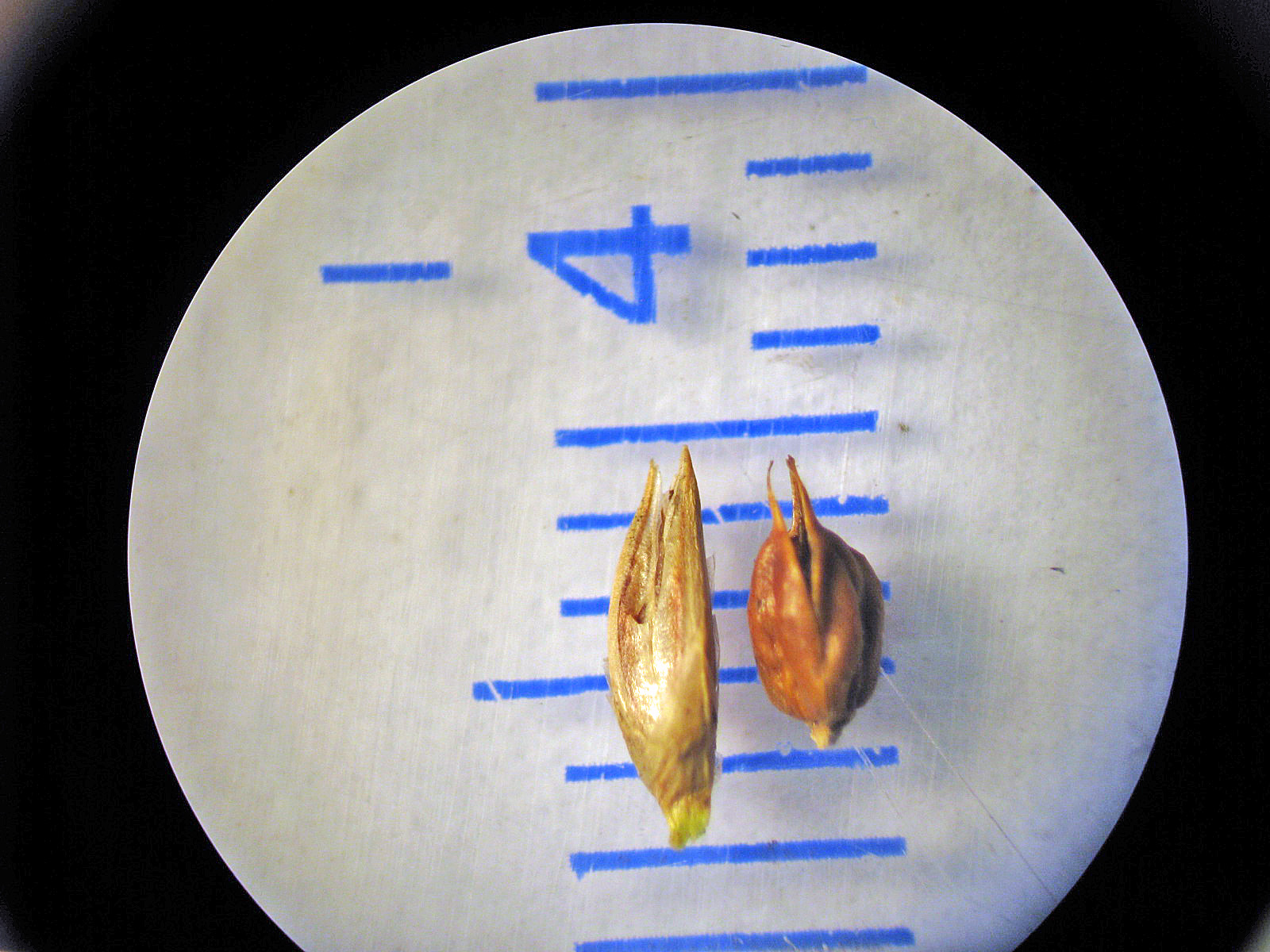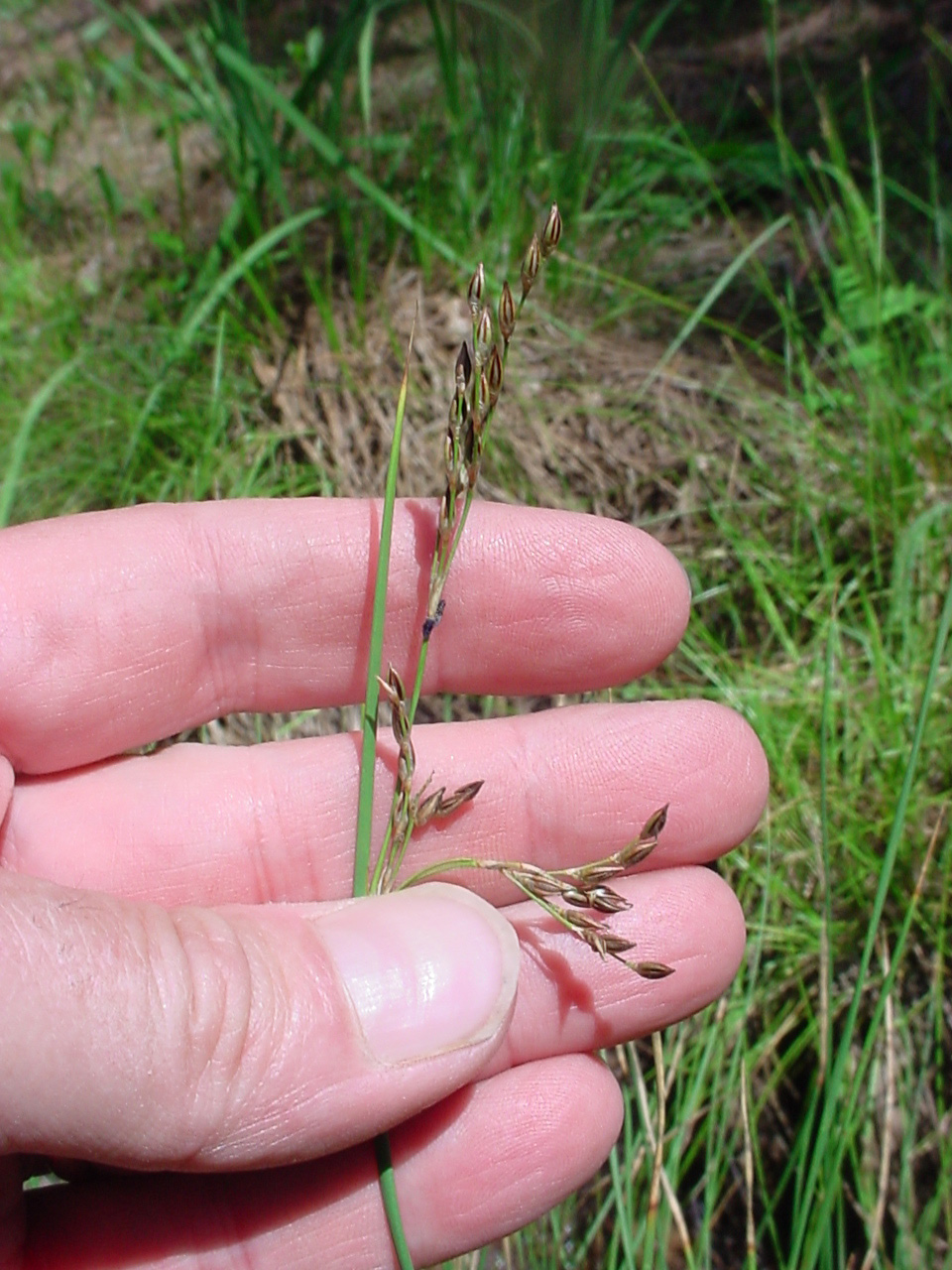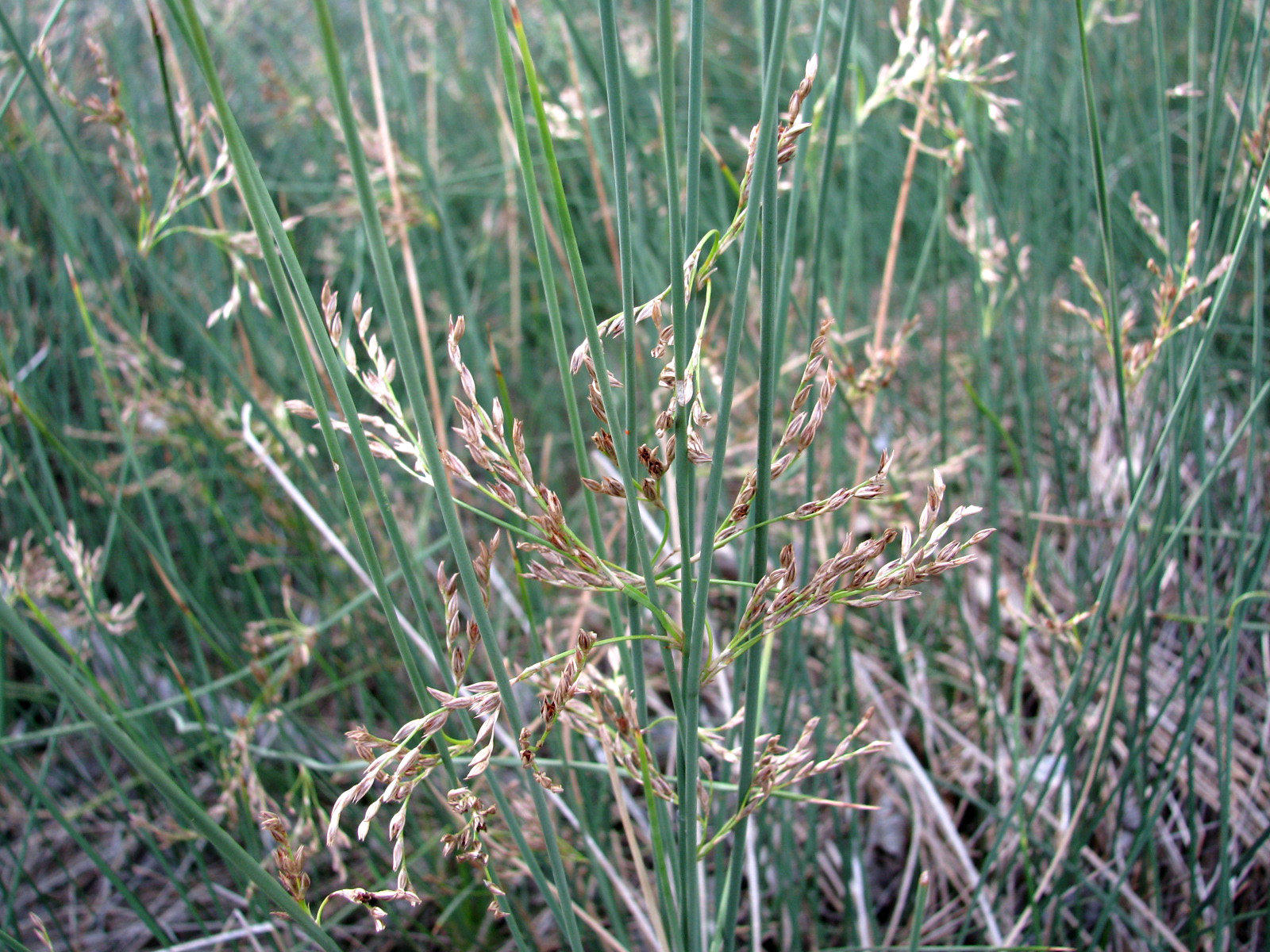Selected Plants of Navajo Rangelands
Rushes

Wire rushes are the primary rush species in Navajo rangelands. They are native to most of North America, and they will grow in wetlands as well as in seasonal wetlands, standing water, and moist grasslands. While not a primary livestock food source, rushes provide food and habitat for many types of wildlife. They also have cultural use as a basket-weaving material and occasional food. They are an important erosion control species due to their dense root systems.
Rushes are not a true grass, but grow in a grasslike form and can be identified by their round leaf cross sections. The wire rush grows in tufts to a height of three feet. The inflorescence may be up to 2 3/8 inches long and contain 10 to 50 flowers. Seeds are brownish red and the size of grains of sand.
Some people use this simple mnemonic to help distinguish rushes, sedges, and grasses: "Sedges have edges, rushes are round, grasses have knees that bend to the ground." An alternate version goes, "Sedges have edges, rushes are round, grasses are hollow right up from the ground."
Rushes found in the Four Corners region include:
- Juncus arcticus
- Juncus bufonius
- Juncus ensifolius
- Juncus interior
- Juncus longistylis
- Juncus torreyi




©2018 NMSU Board of Regents.
Individual photographers retain all rights to their images.
Partially funded by the
Western Sustainable
Agriculture Research and Education Program
(westernsare.org; 435.797.2257),
project EW15-023.
Programs and projects supported by Western SARE are
equally open to all people.